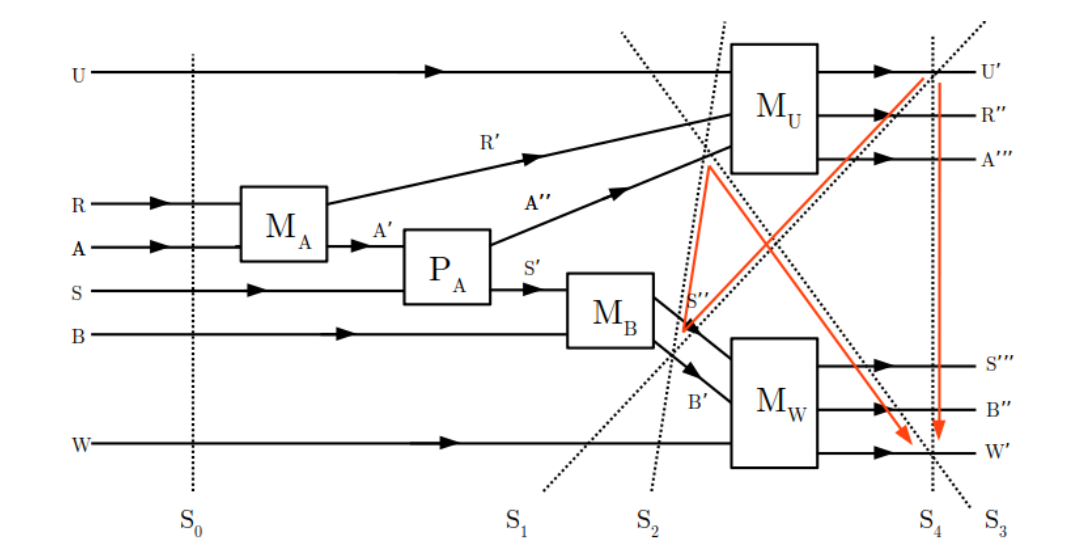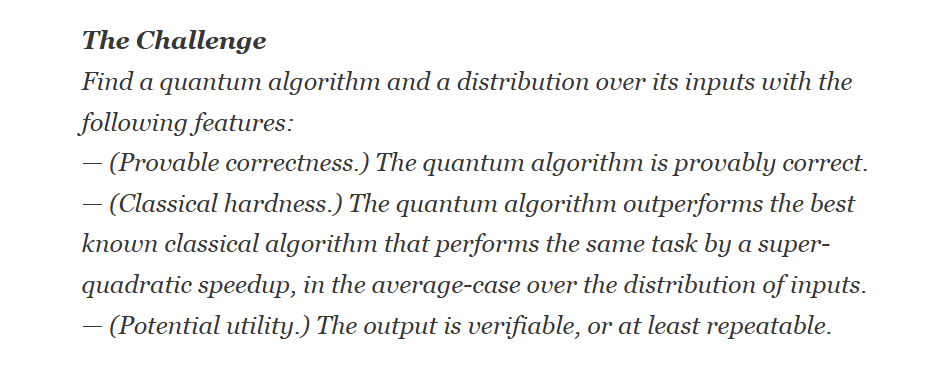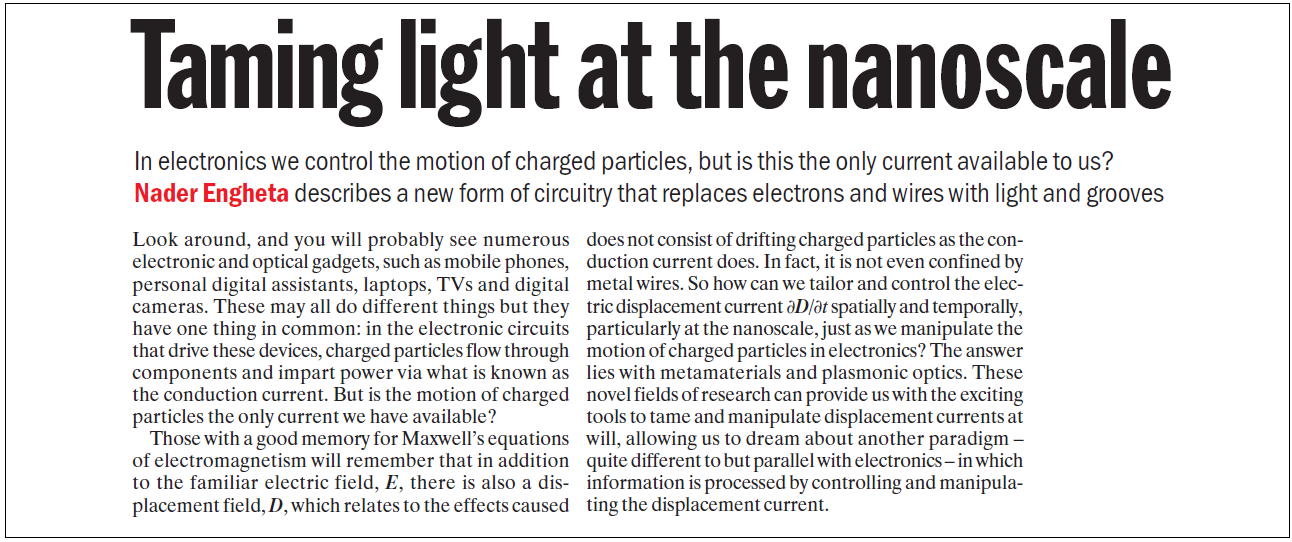When I search the internet on physics blogs, a website called Genius Lab Gear comes top of my search results. They list the 13 best physics blogs in 2025. Top of the list is Quantum Frontiers. It’s a blog by Caltech’s Institute for Quantum Information and Matter (IQIM). The About page tells us how the IQIM is the newest Physics Frontiers Center supported by the National Science Foundation and the Gordon and Betty Moore Foundation. They say this: “Here at IQIM, we study physical systems in which the weirdness of the quantum world becomes manifest on macroscopic scales. Our work spans a wide range of cutting edge research, from superconductivity and nanotechnology, to exotic phases of matter and quantum computation!” It goes on to talk about moving science forward, often against seemingly insurmountable obstacles, which is something I agree wholeheartedly with. So I started reading the articles.
I know I am but what are you? Mind and Matter in Quantum Mechanics
The latest article is I know I am but what are you? Mind and Matter in Quantum Mechanics. It’s by a guy called Jeffrey Epstein. That’s the same name as the billionaire who was found dead in his shared cell after the two guards fell asleep and two cameras malfunctioned. But no matter, the article starts well enough. Epstein says “Nowadays it is best to exercise caution when bringing the words ‘quantum’ and ‘consciousness’ anywhere near each other, lest you be suspected of mysticism or quackery”. I’m happy with that. But then Epstein does an about-face by saying Eugene Wigner didn’t concern himself with this in 1967 when he wrote Remarks on the Mind-Body Question. Epstein goes on to say the workhorse of Wigner’s argument was a thought experiment nowadays called Wigner’s friend. This is said to be a paradox because observer A who observes observer B ends up saying system C is in a different state to what observer B says. It’s another version of Schrödinger’s cat, which Schrödinger used to demonstrate the absurdity of the Copenhagen interpretation. Epstein talks about a later more complex thought experiment by Daniela Frauchiger and Renato Renner, who said Quantum theory cannot consistently describe the use of itself.
 Image from Epstein’s paper showing a visual representation of the formalization of the Frauchiger-Renner protocol
Image from Epstein’s paper showing a visual representation of the formalization of the Frauchiger-Renner protocol
There’s a good summary on Wikipedia. Frauchiger and Renato Renner used two connected Wigner’s friend experiments wherein four observers come up with contradictory statements, showing that there’s an issue with quantum mechanics. Epstein talks at length about the issue, saying things like “the joint system of Alice’s brain and the particle will end up in an entangled state”, whereby “Alice’s mind-substrate is not in a pure state”. He then talks about his own paper Reasoning across spacelike surfaces in the Frauchiger-Renner thought experiment. At 14 pages it’s quite lengthy, but he ends up saying he has pinpointed where the Frauchiger-Renner argument goes wrong. The issue of course is that there is no quantum entanglement. This cuts the Gordian knot and makes Epstein’s article and paper somewhat superfluous.
The most steampunk qubit
The previous article was The most steampunk qubit by Nicole Halpern. She’s a theoretical physicist at the Joint Center for Quantum Information and Computer Science in Maryland, and she is into quantum steampunk. Halpern tells us about a Science news article called With first mechanical qubit, quantum computing goes steampunk. This concerns work by Yiwen Chu et al at ETH Zürich, who came up with they called a mechanical qubit. It consists of mechanical resonator made up of a 400 micrometer sapphire crystal plus a dome of aluminum nitride. This expands and contracts in response to an oscillating voltage, causing the crystal to vibrate. It sits below a similar sapphire crystal bearing a superconducting qubit equipped with a tiny antenna. The idea was that the current in the superconducting qubit would cause the mechanical oscillator to vibrate.
 Image from Science. Credit: Uwe von Luepke/ETH Zürich. Caption: The device consists of a sapphire chip with a superconducting qubit (gray rectangles, left) on top of another that acts as a mechanical oscillator (gray dot, right).
Image from Science. Credit: Uwe von Luepke/ETH Zürich. Caption: The device consists of a sapphire chip with a superconducting qubit (gray rectangles, left) on top of another that acts as a mechanical oscillator (gray dot, right).
The team tuned the superconducting qubit so that its frequency was a little different to the mechanical resonator, such that “the quantum states of the superconducting qubit melded slightly with those of the mechanical oscillator”. This allegedly formed “a single system in which the energies of the hybridized states were no longer evenly spaced”. This apparently induced ‘anharmonicity’ which allowed the ETHZ researchers to isolate the two lowest energy states as the 0 and 1 states of a qubit. The device has a fidelity of only 60%, but the team hope to use two of them to perform simple logical operations. Halpern went on to talk about a visit to UC Berkeley, where an assistant professor called Alp Sipahigil proposed a similar cantilever-like qubit where an atomic-force microscope replaced the superconducting qubit. Halpern might have found the work interesting, but it left me cold. It isn’t really steam punk. All we’re talking about here is a offbeat vibrator, and not a very good one at that.
Quantum automata
The next article I read was Quantum automata, again by Nicole Halpern. She tells us that an ancient Greek called Archytas of Tarentum reportedly created a steam-power mechanical pigeon. She also tells us that French engineer Jacques de Vauconson built a mechanical duck that appeared to eat and expel grain. Halpern goes on to point out that Vauconson also invented a loom, which was in essence just another automaton, and that automata, or machines, were instrumental to the Industrial Revolution. She also talks about self-driving cars, robot vacuum cleaners, robot delivery drones, and so on. She then talks their quantum counterparts, saying “the roster of such machines includes autonomous quantum engines, refrigerators, and clocks”. She says often, instead of receiving work, an automaton might access a hot environment and a cold environment, such that heat flows from hot to the cold and the automaton transforms some of the heat into work.
 Image from Quantum frontiers, Credit: Chalmers University of Technology/Boid AB/NIST. Caption: artist’s conception of the autonomous-quantum-refrigerator chip.
Image from Quantum frontiers, Credit: Chalmers University of Technology/Boid AB/NIST. Caption: artist’s conception of the autonomous-quantum-refrigerator chip.
There’s no issue in making use of a temperature difference. However Halpern then talks of quantum automata, quantum thermodynamics (which has allegedly “helped illuminate the nature of the universe”), quantum batteries, quantum refrigerators, quantum engines, quantum clocks, quantum circuits, quantum energy transducers, quantum information, quantum steampunk, and a quantum octopus. Sigh. This is what passes for physics these days? I feel so sorry for Halpern, she’s been suckered into all this. Quantum this, quantum that, and yet quantum merely means “how much”. It’s the quantum nauture of light because Planck’s constant of action is common to all photons, that’s all. All the rest of it, is just quantum bullshit.
Quantum algorithms: a call to action
The next article was Quantum algorithms: a call to action by Robbie King. He starts by saying quantum computing finds itself in a peculiar situation. He says “after billions of dollars and decades of research, working quantum computers are nearing fruition”. Then he says the elephant in the room is that we don’t know what they’re good for. He goes on to say that for theorists like himself, this is a call to action. Then he talks about technological momentum, saying the theoretical basis of quantum error-correction is solid, and “several platforms are approaching or below the error-correction threshold”. He refers to Harvard, Yale, and Google, and says experimentalists believe that today’s technology can be scaled up to 10⁶ gates. He also says this: “if mankind spends $100 billion over the next few decades, it’s likely we could build a quantum computer”. Next few decades? Likely? I sigh again. King moves on to say “a more concerning reason that quantum computing might fail is that there is not enough incentive to justify such a large investment”. He makes a comparison with nuclear fusion, saying the benefits of that are clear, but it’s not the case for quantum computing. Hence he says “the time to discover quantum algorithms is now”. He says a few pages of mathematics by Peter Shor inspired thousands of researchers, engineers and investors to join the field, and another few pages by someone reading this blog may result in a “world-altering impact for the industry”. He goes on to give a challenge, saying the quantum algorithm should outperform the best known classical algorithm by a super-quadratic speedup, but that it may “be unproductive to aim directly at solving existing real-world problems with quantum algorithms”.
 Screenshot from Quantum algorithms: a call to action by Robbie King
Screenshot from Quantum algorithms: a call to action by Robbie King
He ends up telling us that at the annual QIP conference, “only a handful of papers out of hundreds each year attempt to advance new quantum algorithms”. To remedy this he says “embracing a mission-driven mindset can propel our field forward”. He tells us that to that end, contributors should allow themselves an exploratory scrappy approach, because “the bar for meaningful progress is lower than it might seem”. His final words are “Don’t be too afraid!”
Get out while you can
I disagree with that. I would say this to any readers in the field: be afraid. Not because there’s been some Ivy League trouble of late. But because quantum entanglement is scientific fraud, which is why quantum computers will never work. Get out while you can. Get into photonics instead. Or optical computing. It uses light, which is a form of displacement current. See the 2010 physicsworld article taming light at the nanoscale:
 Fair use excerpt from taming light at the nanoscale
Fair use excerpt from taming light at the nanoscale
Displacement current is more fundamental than conduction current. That’s because the latter is the motion of electrons. And because the electron consists of displacement current in a double-loop spin ½ closed path. The spin is complex, both toroidal and poloidal. As far as I can tell it resembles a spindle sphere torus, which in turn resembles the typical depiction of a qubit.
The Quantum Frontiers blog is a tragic indictment of the state of contemporary physics
Don’t forget that quantum computing has been kicking around for more than forty years now. Remember that Robbie King talks says it’s likely we could build a quantum computer “if mankind spends $100 billion over the next few decades”. It isn’t going to happen. I know this because I know about Malus’s law and the three-polarizer trick. The three-polarizer trick works because polarizer A alters the polarization of photon A, not the polarization of photon B. This means there is no quantum entanglement, which means quantum computers will never deliver. That means that thousands of people are wasting their time and treasure chasing something that will never work. They do this because they’ve been taught by people who have been taught by people who did not understood the fundamentals physics. So all in all, I think the Quantum Frontiers blog is a tragic indictment of the state of contemporary physics. I suspect I’m not the only one who thinks like this.
The situation at Columbia
I say that because Peter Woit’s Not Even Wrong blog isn’t on the Genius Lab Gear list. I suspect it’s for a very good reason. As I write, Woit’s most recent article is The Situation at Columbia XX. What’s the XX on the end of the title? His previous article was The Situation at Columbia XIX. That’s an XIX as in nineteen. Yes, apart from three minor exceptions, Woit’s last twenty articles were all about what’s been happening at Columbia University. It goes back to the attack on Israel on October 7th 2023. That’s where Palestinians killed 1195 people and took 240 hostages. Then they paraded naked female bodies on the back of their pickup trucks to jubilant Palestinians dancing in the streets. After this there was a marked increase in antisemitism, especially on US college campuses. The latter was investigated in the 2023 congressional hearings on antisemitism. That’s where congresswoman Elise Stefanik’s asked this question: “Does calling for the genocide of Jews violate Penn’s rules or code of conduct, yes or no?” UPenn president Elizabeth Magill smirked as she replied:
 Screenshot from the 2023 congressional hearings on antisemitism
Screenshot from the 2023 congressional hearings on antisemitism
Magill said “If the speech turns into conduct it can be harassment, yes”. After a further exchange Stefanik’s response was total incredulity: “Conduct meaning committing the act of genocide?” The Harvard president Claudine Gay and the MIT president Sally Kornbluth gave similar evasive replies. To cut to the chase, left-leaning Ivy League universities were turning a blind eye to antisemitism orchestrated by foreign students, and Trump won’t tolerate it. He won’t tolerate the DEI discrimination either. Woit however is not sympathetic. He refers to Trump as “the Fascist dictator”, and spoke of “absurdly illegal actions”. That’s a reference to the Department of Homeland Security (DHS) revoking Harvard’s access to the SEVP programme. That means Harvard can’t enrol foreign students, whatever some district judge might say. Take a look at Woit’s other Columbia articles and you can see that he’s a clear case of Trump derangement syndrome. He is suffering some confusion about who the Fascists are. It isn’t blue-collar rust-belt Trump voters who dress in black and go round all masked up smashing shop windows and torching buildings. It isn’t the Trump voters chanting genocide. It isn’t Jewish people either. But that’s Woit for you. He portrays himself as a white knight champion of enlightenment, but actually he’s a leading member of the physics thought police, chock to the gills with massive intellectual arrogance. Try pointing out the issues with the Standard Model in a comment on his blog, and you will find yourself cold-shouldered, censored, and cancelled.
Methinks he’s confusing academic freedom with antisemitic freedom
Matt Strassler isn’t sympathetic either. See his article The War on Harvard University. Strassler says the United States’ government is waging an all-out assault on Harvard University. He talks of “an assault on academic freedom and scientific research”. Methinks he’s confusing academic freedom with antisemitic freedom. As for the scientific research, that’s rich coming from a Standard Model shill who brooks no dissent. But never fear, he has put his Blog on Indefinite Pause, which is doubtless why it too isn’t on the Genius Lab Gear list. He says it’s because writing “good articles about quantum physics requires concentration and focus. When people’s careers and life’s work are being devastated all around me, that’s simply not possible”. I found that rather odd, because as far as I can tell Strassler was not well treated by Harvard. He was a visiting professor until 2015, but is now only a physics department associate. Perhaps, as ever, he’s trying to curry favour, like he’s been sucking up to CERN. In addition I take issue with his “good articles” claim, but I’ll pass on that for now.
Seeing as she’s German, this is something she knows about
On the bright side I thought Sabine Hossenfelder gave a fair round-up. Her Backreaction blog is fourth on the Genius Lab Gear list. What a pity it is now a lightweight video blog – at the time of writing she has posted 20 videos in May so far. See her piece on Why US Professors are talking about Fascism. Seeing as she’s German, this is something she knows about. So she does not sympathise, and points out the issues that Woit and Strassler won’t talk about. I thought it was fairly balanced myself. I didn’t like it when she said what’s the point in banning masks, but I did like her mention of blogger Scott Aaronson. He’s a Computer Science professor at the University of Texas at Austin. He blogs about about quantum computing. See his article Fight Fiercely, where he sympathises with Harvard. Note though that Aaronson is Jewish, and he’s standing up and being counted. He put some good comments on Woit’s blog, so much so that Woit turned the comments off. Aaronson also tells us he’s lost four or five left-wing academic friends since October 7th:
 Screenshot from Scott Aaron’s blog Shtetl-Optimized
Screenshot from Scott Aaron’s blog Shtetl-Optimized
I take a special interest in Aaronson because he was very critical of Joy Christian. See Mark Buchanan’s 2007 New Scientist article Quantum Entanglement: Is Spookiness Under Threat? This referred to a paper by Christian called Disproof of Bell’s Theorem by Clifford Algebra Valued Local Variables. In essence Christian argued that John Bell got his famous theorem wrong because he assumed that hidden variables commute. However Bell didn’t consider rotations, which do not commute. Since polarizer A alters the polarization of photon A as opposed to the polarization of photon B, I think Christian had a valid point. But seeing as Aaronson has done the decent thing re antisemitism, I’m willing to let bygones be bygones. In fact, I feel so generous, that I’d like to give him a head start on a new career direction. So I’d be grateful if one of my kind readers could send him a little Powerpoint presentation I prepared earlier. It’s called Quantum entanglement does not exist. Then perhaps Aaronson could show it to his friends, or even present it at his next conference. That too would be standing up and being counted. Tell him from me that there is a new frontier, and there may be prizes in store. Toodle pip!
Edit 29/05/2025 17:06 : Woit has posted two new blog articles whilst I’ve been doing this today. One is Leinweber Institutes for Theoretical Physics. The other is The situation at Columbia XXI. He starts by talking about bogus accusations of “antisemitism”. Those are his quotes around the word antisemitism. Meanwhile Sabine Hossfelder has added a new blog article Laser tech might be the future of computing. It’s actually about laser cooling rather than optical computing, but she had me worried there for a moment.